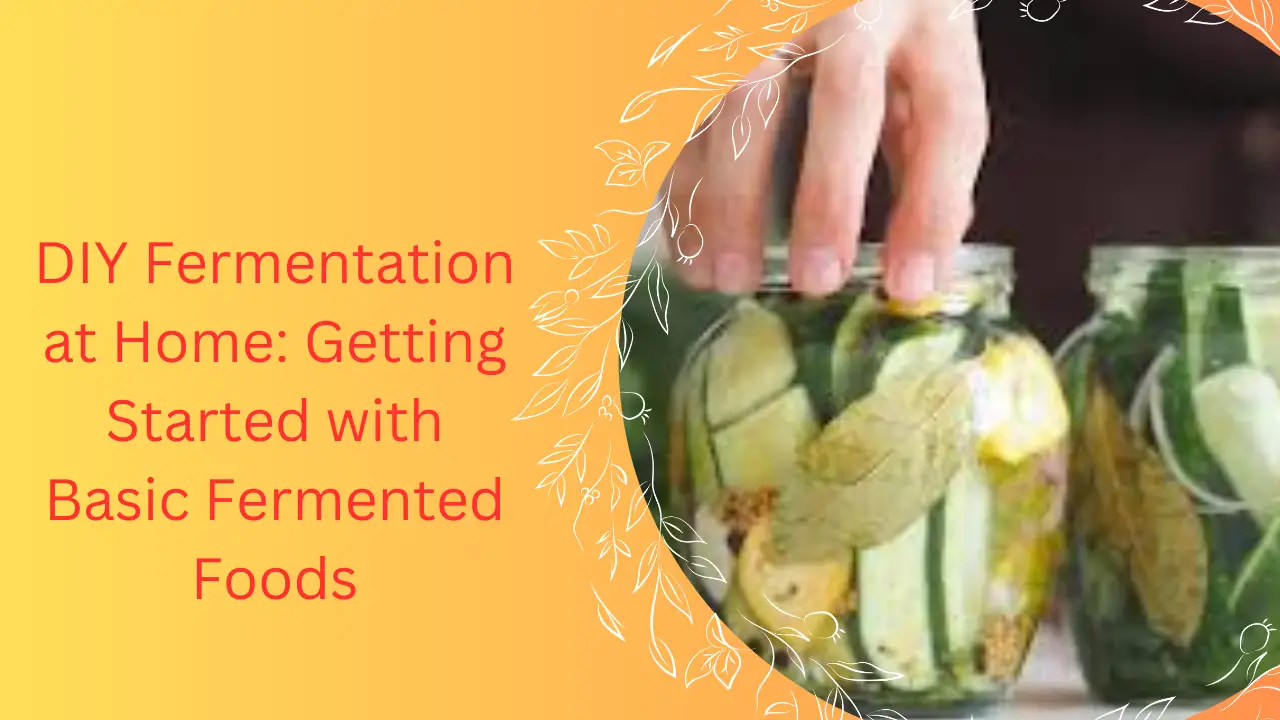
Dreo Space Heater, Portable Electric Heaters for Indoor Use with Thermostat, Digital Display, 1-12H Timer, Eco Mode and Fan Mode, 1500W PTC Ceramic Fast Safety Heat for Office Bedroom Home
10% OffDIY Fermentation at Home: Getting Started with Basic Fermented Foods
Introduction
Welcome to the world of DIY fermentation! If you’ve ever enjoyed the tangy kick of sauerkraut or the spicy goodness of kimchi, you’re in for a treat. Fermentation is a fascinating and rewarding process that allows you to transform simple ingredients into delicious and probiotic-rich foods right in your own kitchen. In this guide, we’ll take you through the basics of fermentation, the incredible benefits it offers, and step-by-step instructions on how to get started.
What is Fermentation?
Unveiling the Magic Fermentation is a natural process in which microorganisms like bacteria, yeast, and fungi break down food components, such as sugars and starches, into simpler substances. This metabolic dance results in the creation of unique flavors, preservation of food, and the development of beneficial probiotics.
The Role of Microbes
Microbes, the unsung heroes of fermentation, play a crucial role. Lactic acid bacteria, for instance, are responsible for the tanginess in yogurt and the sourness in sourdough bread. Understanding these microorganisms is key to successful fermentation.
Benefits of Fermented Foods
Gut Health Boost
Fermented foods are a powerhouse of probiotics, the friendly bacteria that promote a healthy gut. A balanced gut microbiome can improve digestion, boost immunity, and even enhance mood.
Nutrient Enhancement
Fermentation can increase the availability of nutrients in foods, making them more nutritious. For example, fermented vegetables may have higher levels of certain vitamins.
Longer Shelf Life
One of the earliest reasons for fermenting foods was preservation. Fermentation can extend the shelf life of perishables, reducing food waste.
Getting Started with DIY Fermentation
Are you ready to dive into the world of fermentation? Let’s get started!
Choosing the Right Ingredients
Before you embark on your fermentation journey, it’s essential to select the best ingredients. Fresh, high-quality produce will yield the tastiest results. Learn how to pick the perfect vegetables, grains, or dairy products for your creations.
Essential Equipment
You don’t need a laboratory to ferment food at home. Discover the basic tools and containers required for successful fermentation. From mason jars to fermentation weights, we’ve got you covered.
The Fermentation Process
The Science Behind It
To become a fermentation maestro, it helps to understand the science. Dive into the details of how microbes, temperature, and time work their magic.
Basic Fermented Food Recipes
Let’s roll up our sleeves and create some delicious fermented treats. Here are three beginner-friendly recipes to get you started:
1. Sauerkraut
Sauerkraut is a classic fermented cabbage dish. Learn how to turn cabbage and salt into a zesty and crunchy condiment.
2. Kimchi
Kimchi, a Korean staple, is a spicy and flavorful side dish. Discover the secrets to making your own batch at home.
3. Yogurt
Homemade yogurt is creamy, probiotic-rich, and free from additives. We’ll show you the easy way to make it from scratch.
Troubleshooting Common Issues
Fermentation can be a bit unpredictable, but fear not! We’ve got solutions for common problems like mold, off-flavors, and slow fermentation. Your creations are salvageable.
Tips for Successful Fermentation
Here are some golden nuggets of wisdom to ensure your fermentation projects turn out flawlessly. From hygiene practices to flavor experimentation, we’ve got you covered.
Storing Fermented Foods
Once your fermented masterpieces are ready, learn how to store them for long-term enjoyment. Proper storage techniques can preserve the flavors and probiotics.
Conclusion
Congratulations! You’ve taken your first steps into the exciting world of DIY fermentation. The journey may have started with the basics, but there’s a whole universe of fermented foods waiting for you to explore. Embrace the flavors, experiment with recipes, and savor the health benefits of your homemade creations.
FAQs
- Can I ferment fruits?
Absolutely! Fruits can be fermented into delicious preserves and beverages. Experiment with berries, apples, or even grapes.
- How long does fermentation take?
The time varies depending on the recipe and conditions, but most basic fermentations take anywhere from a few days to a few weeks.
- Is it normal for my ferment to smell funky?
Yes, it’s perfectly normal for ferments to have unique odors. Trust your senses, and if it smells unpleasantly foul, that’s a sign something may be off.
- Can I use tap water for fermentation?
It’s best to use filtered or dechlorinated water, as chlorine can inhibit fermentation.
- What if I see mold on my ferment?
Don’t panic! Remove the moldy bits, ensure your container is clean, and continue fermenting. Mold is rare and can usually be managed.
Happy fermenting, and may your kitchen be filled with the delightful aromas of homemade probiotic goodness!











